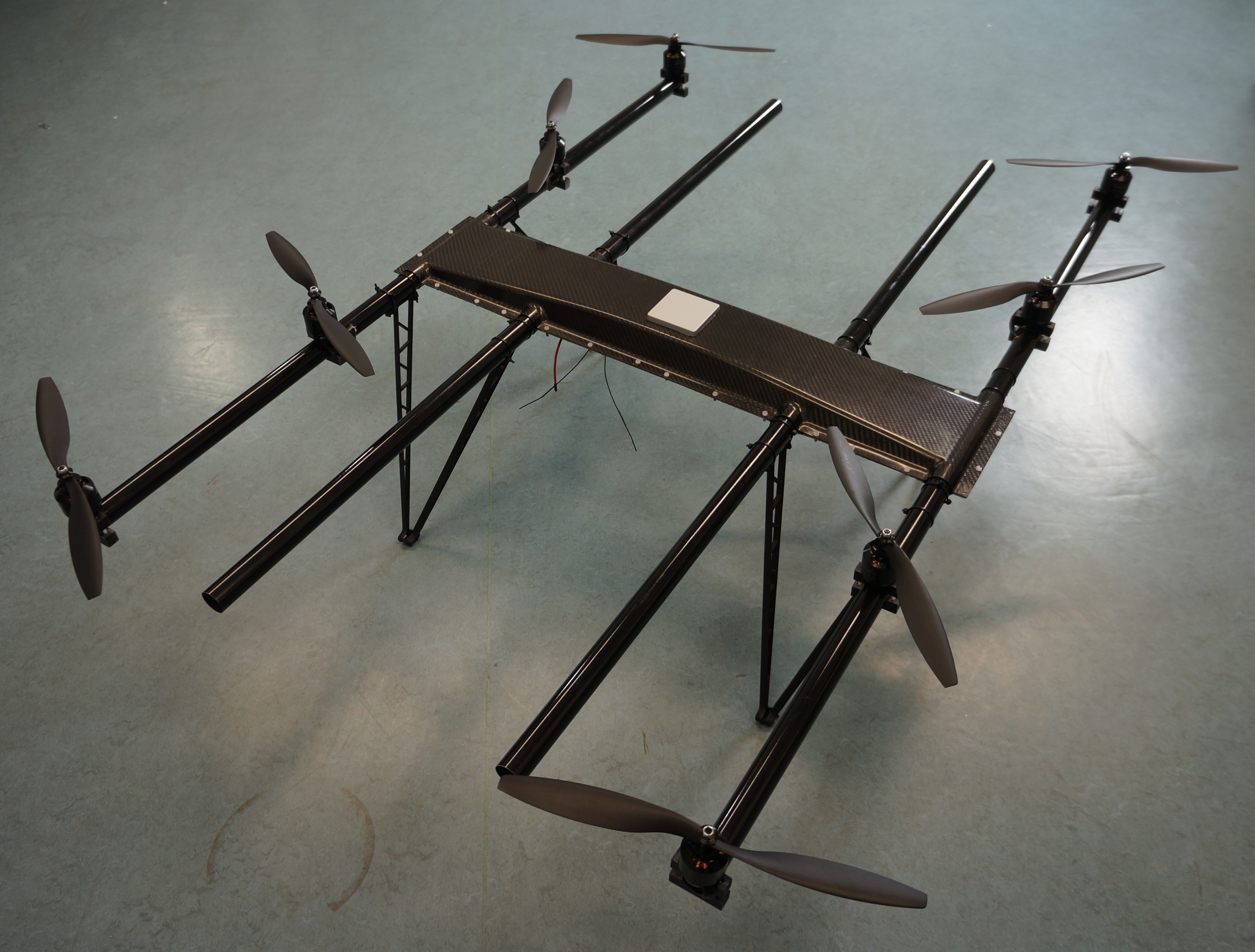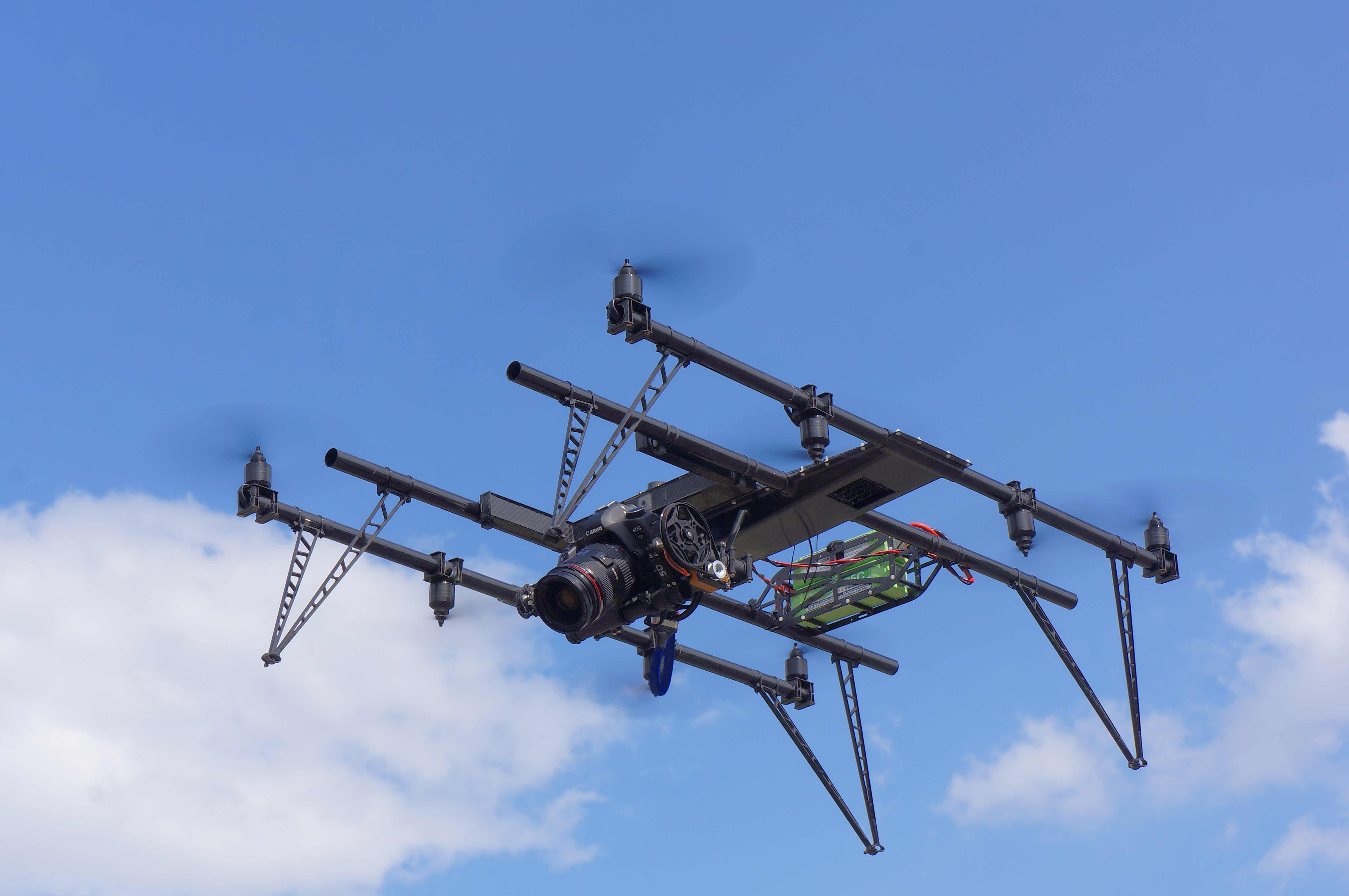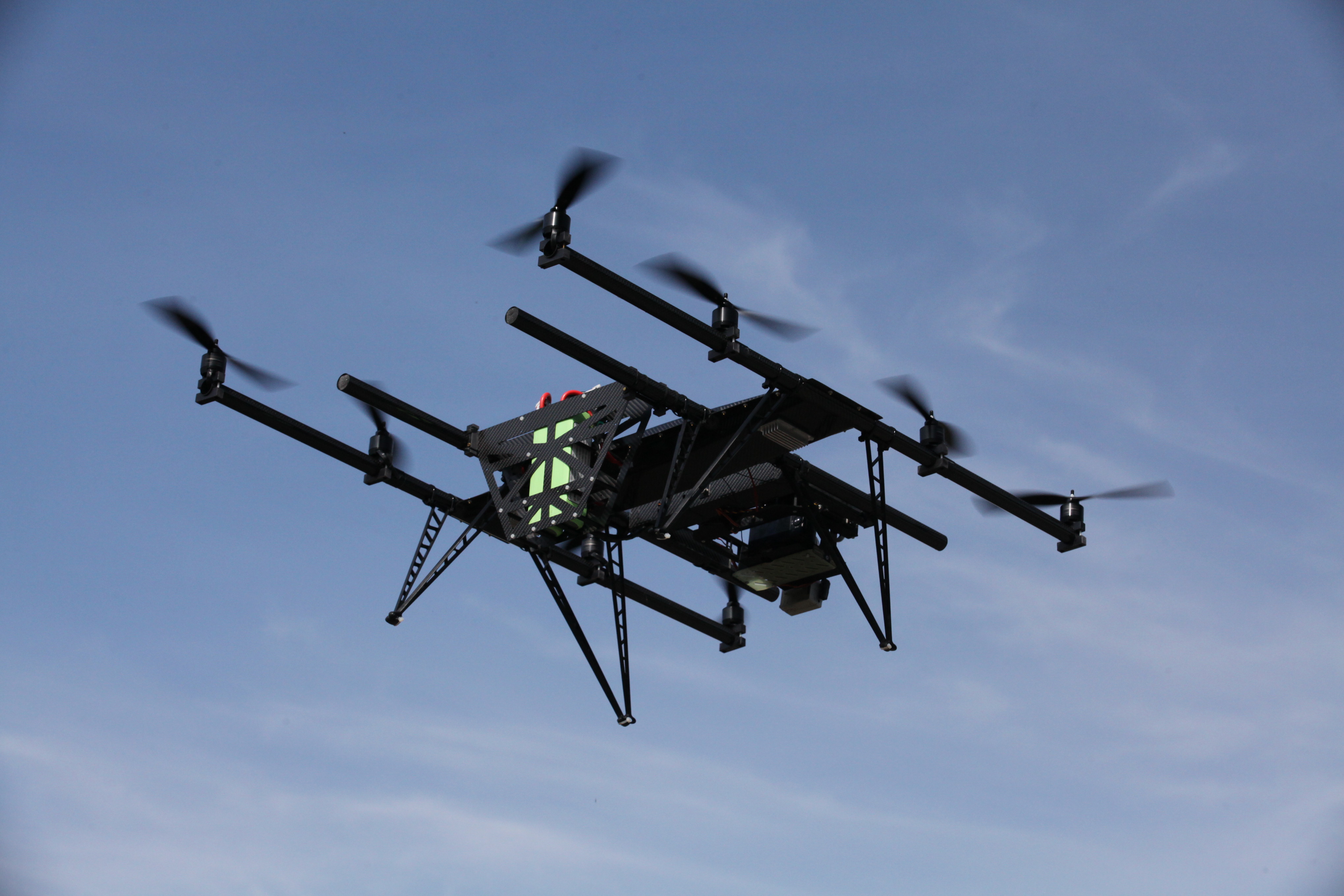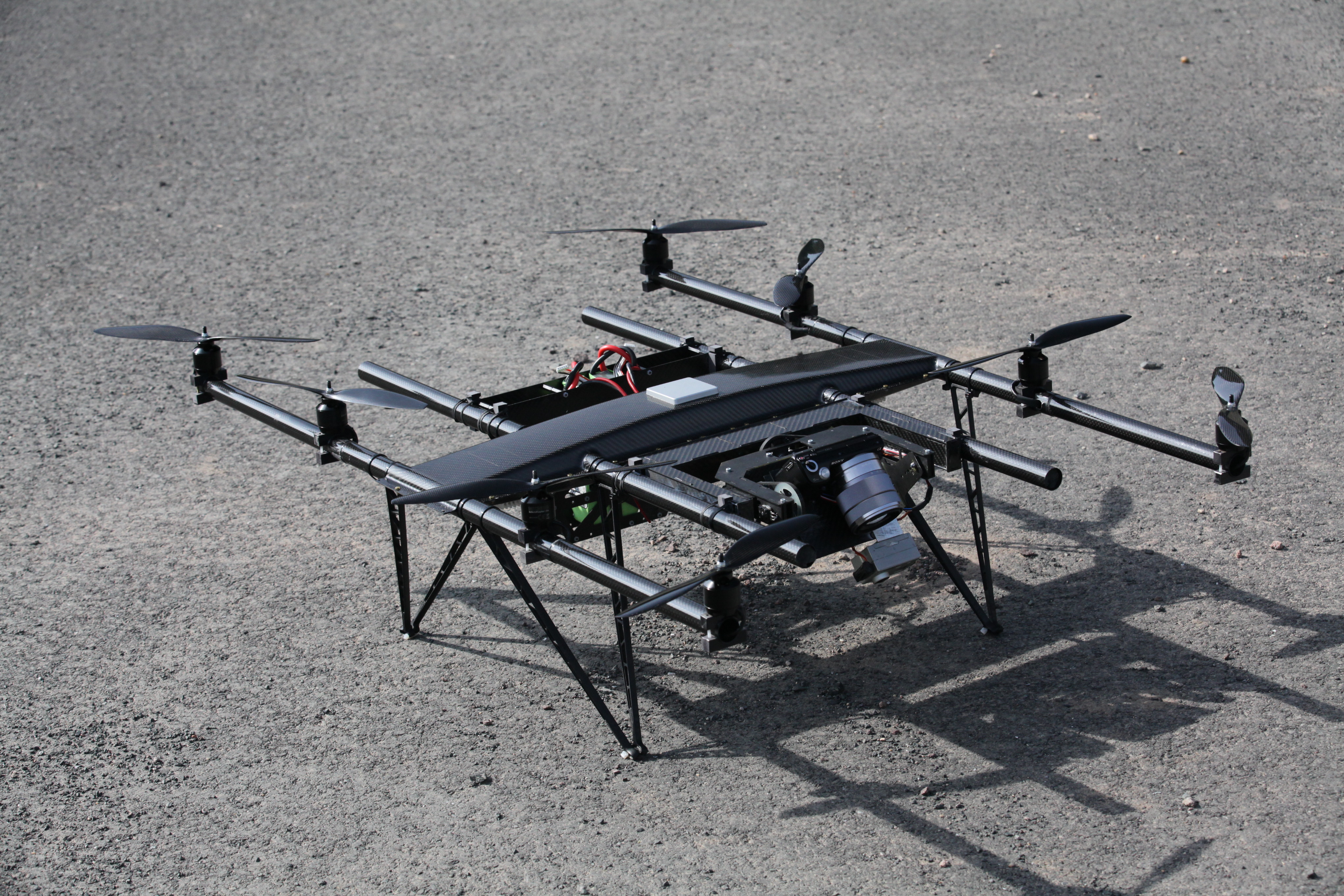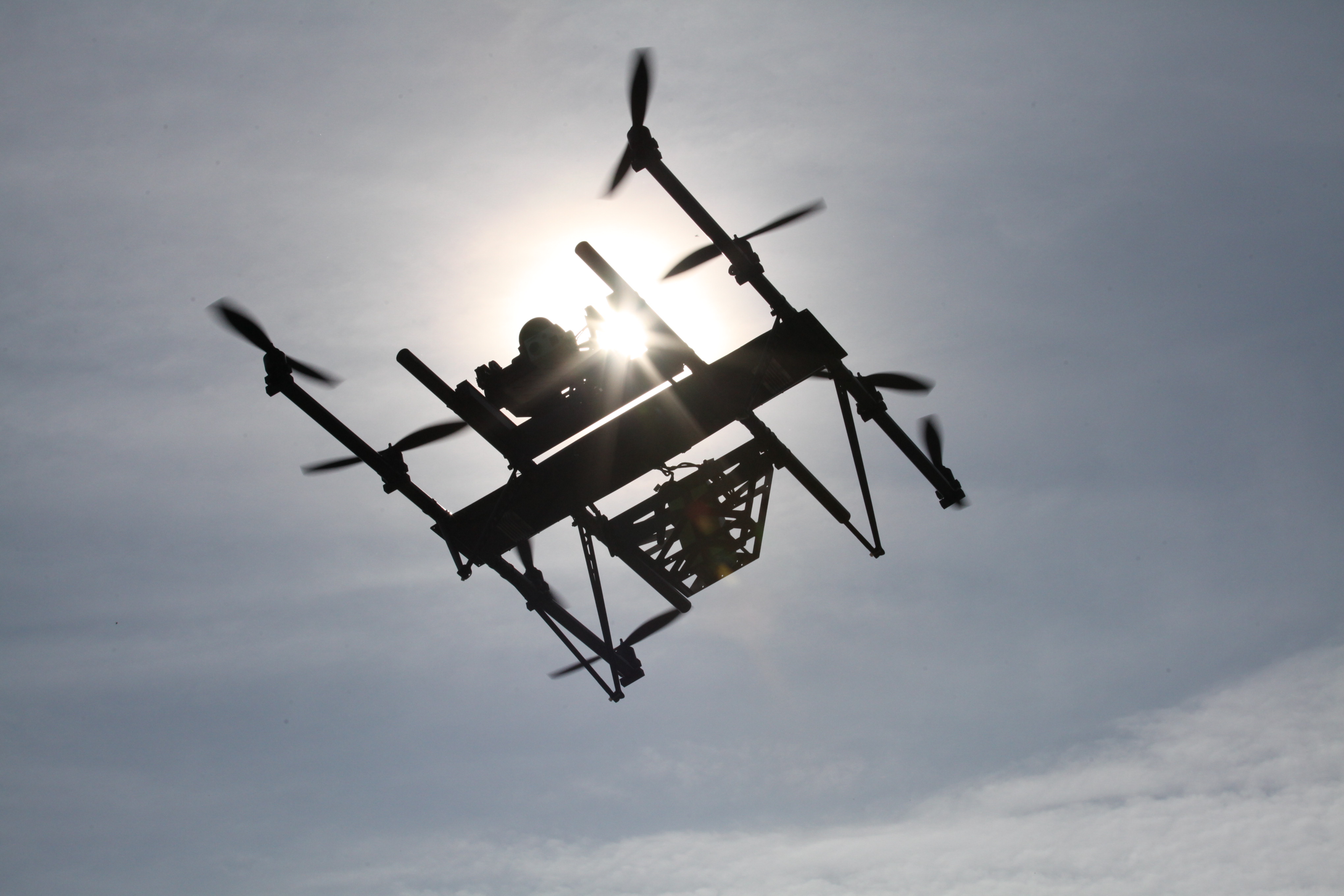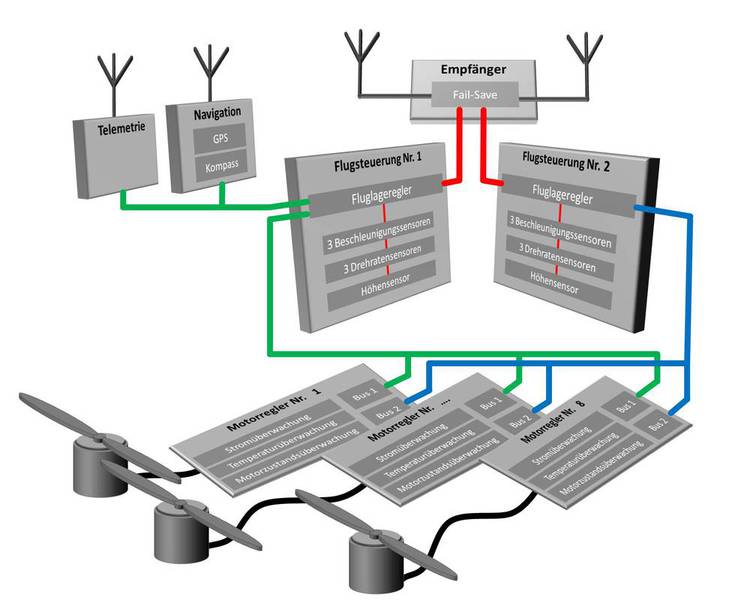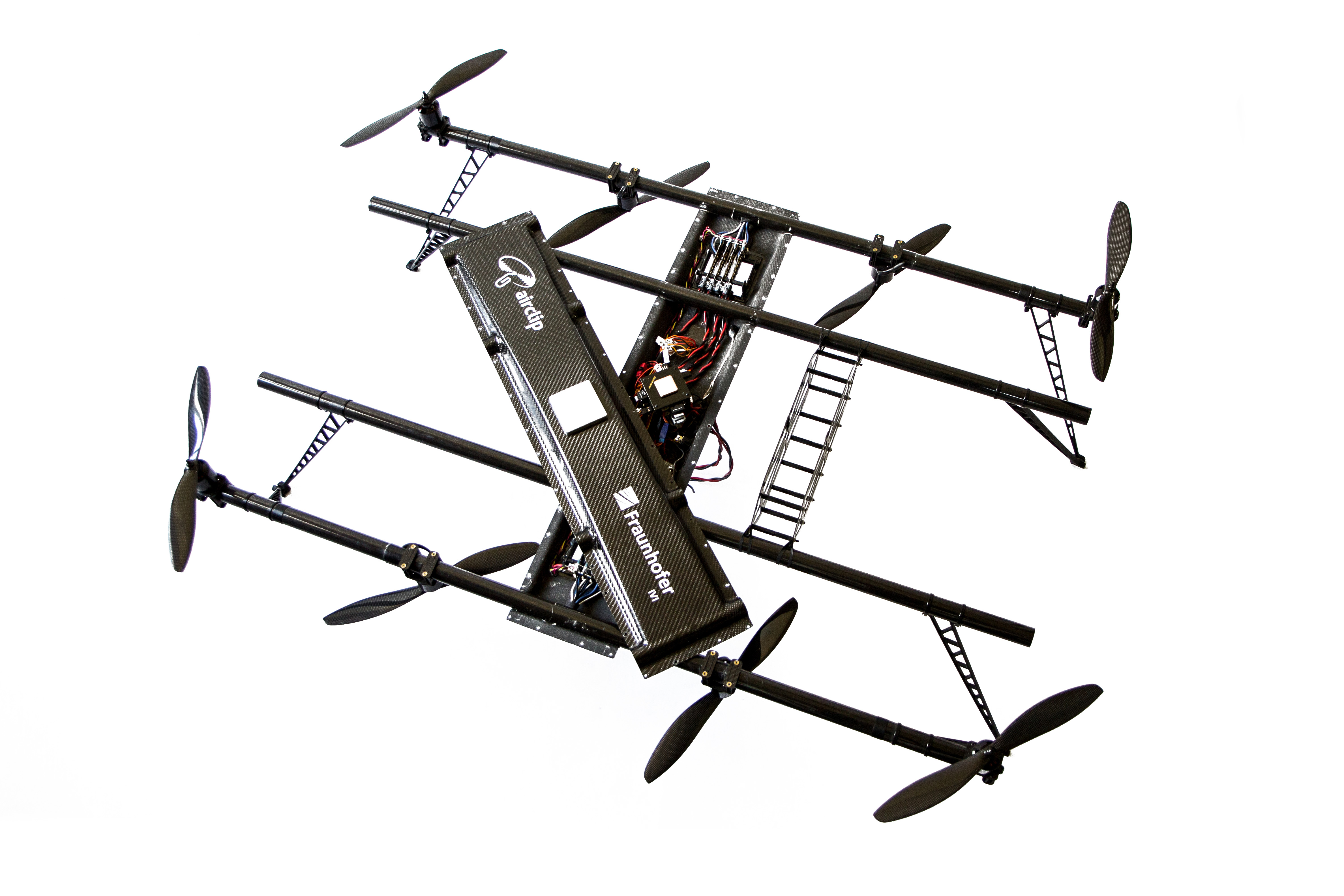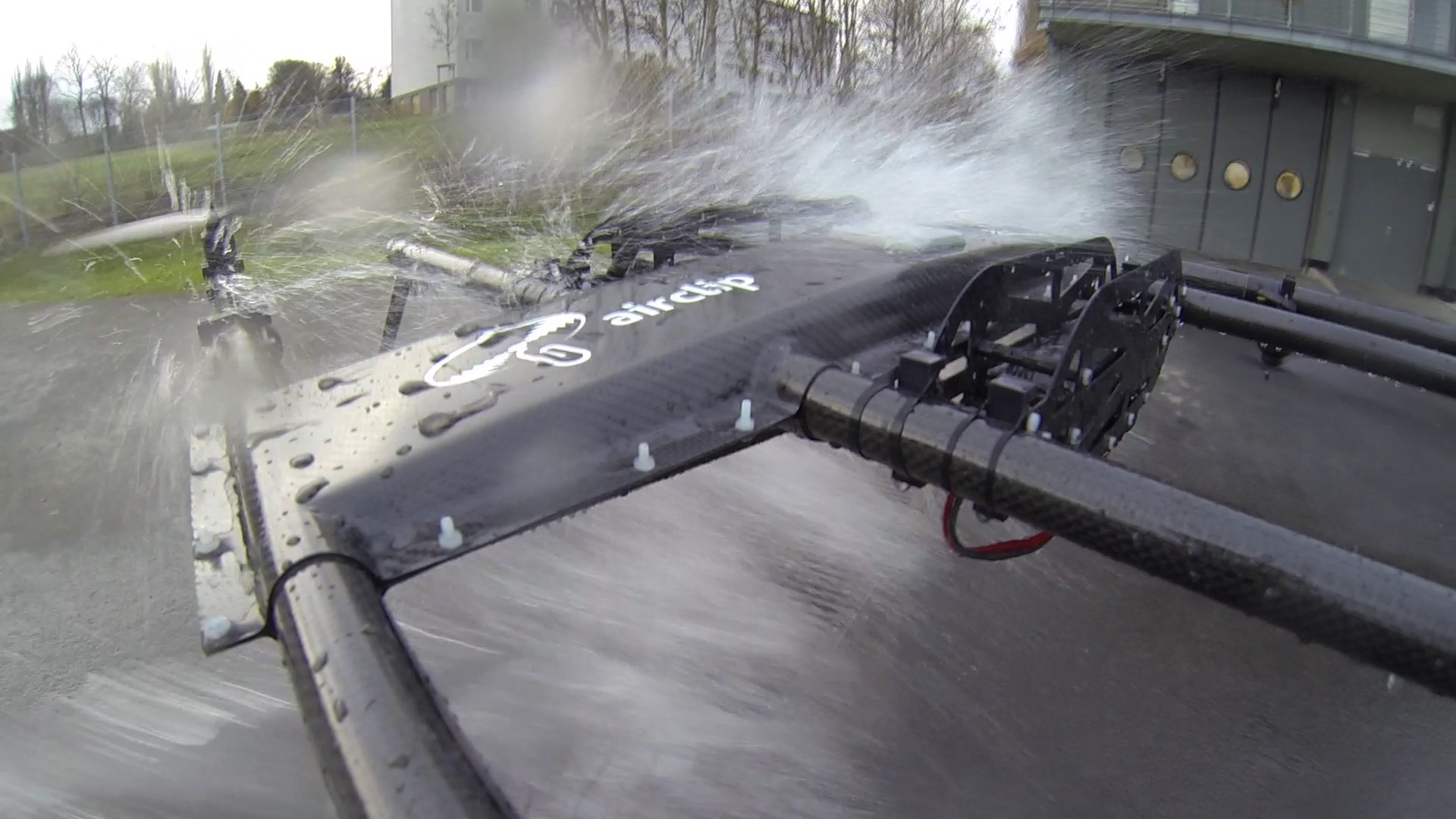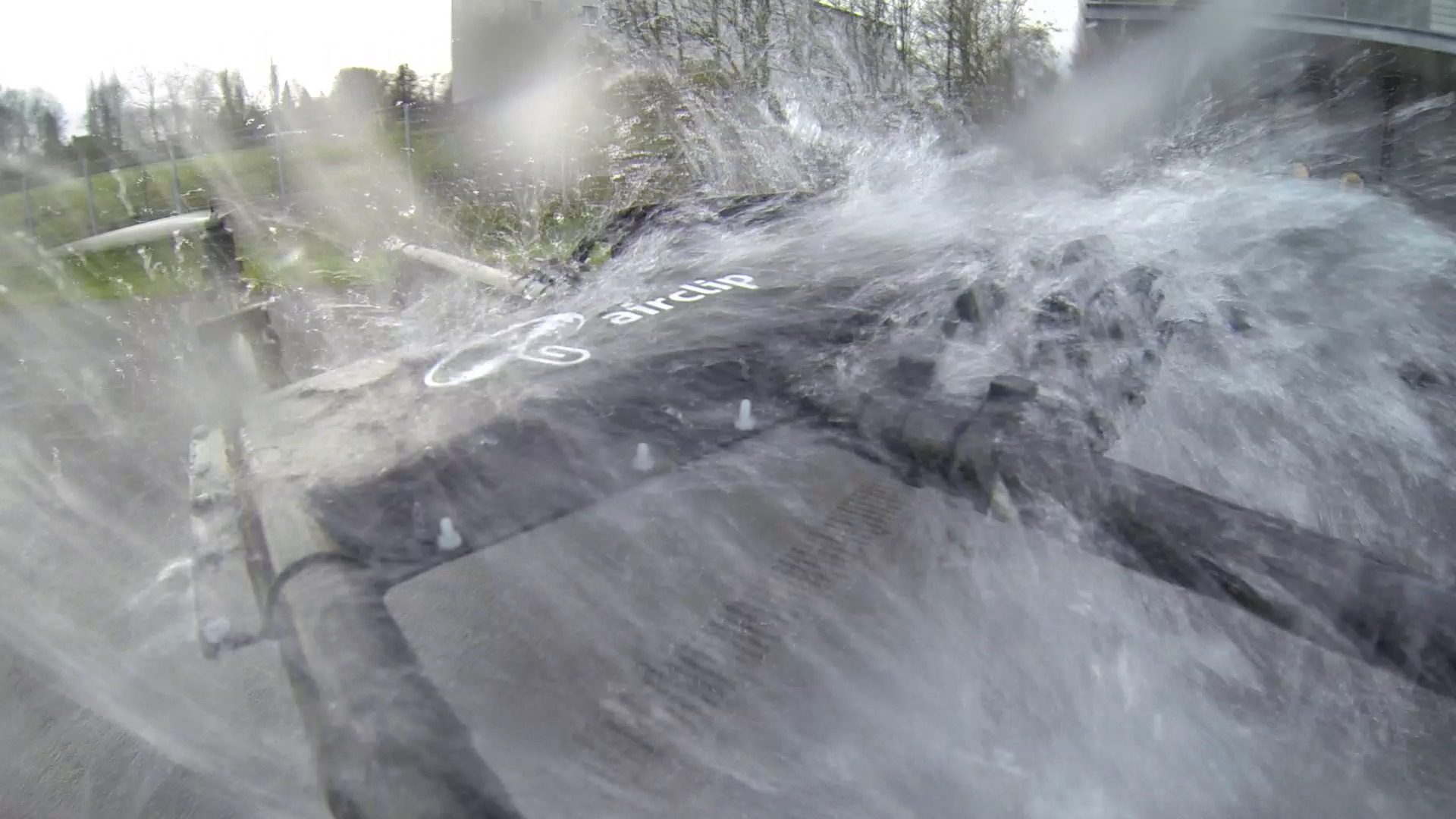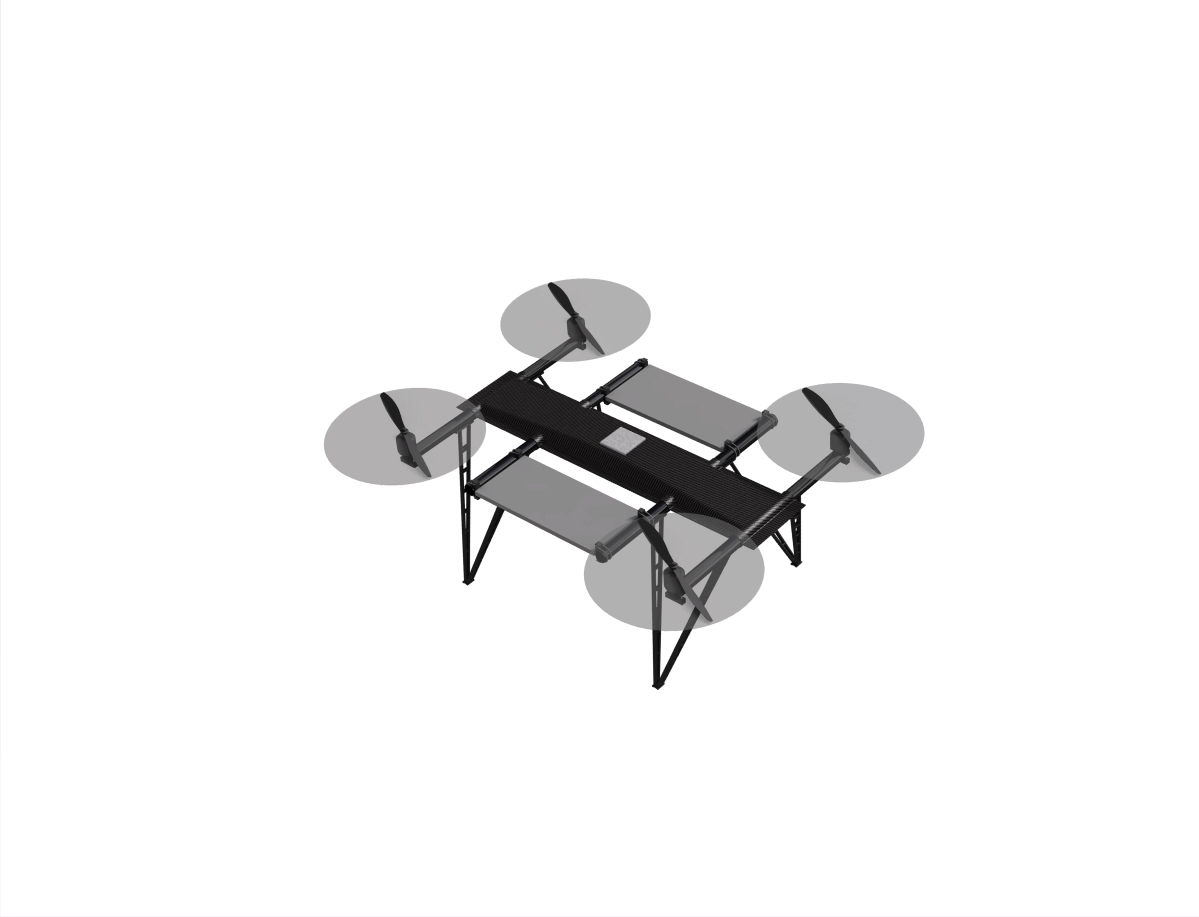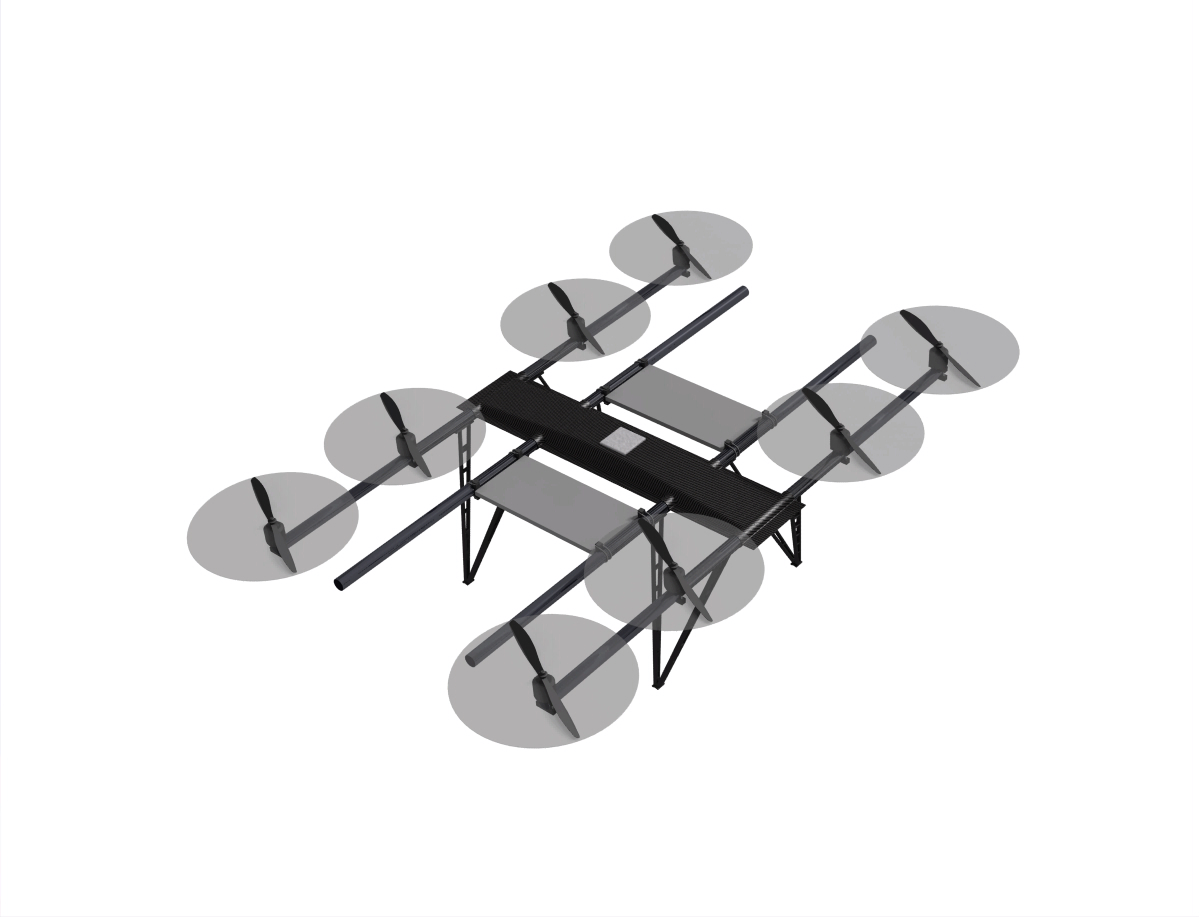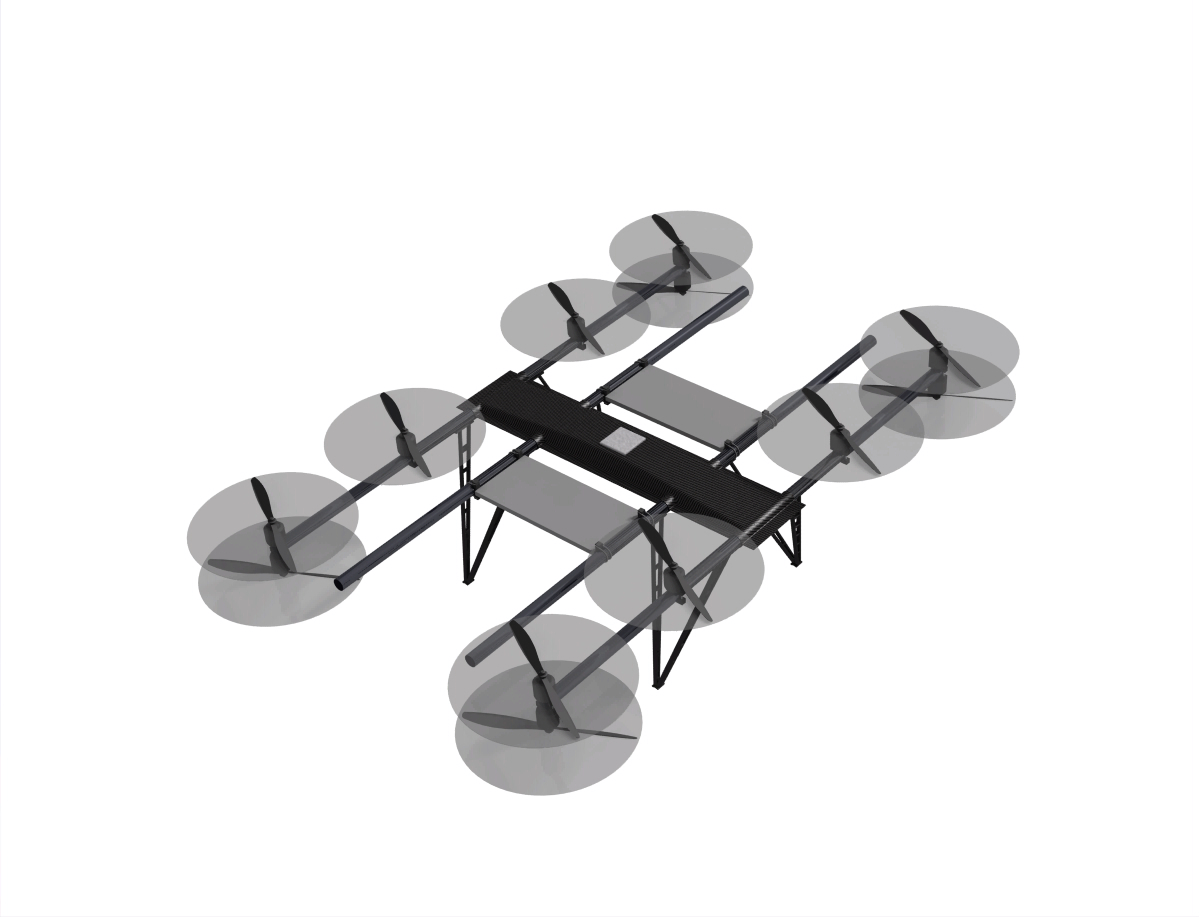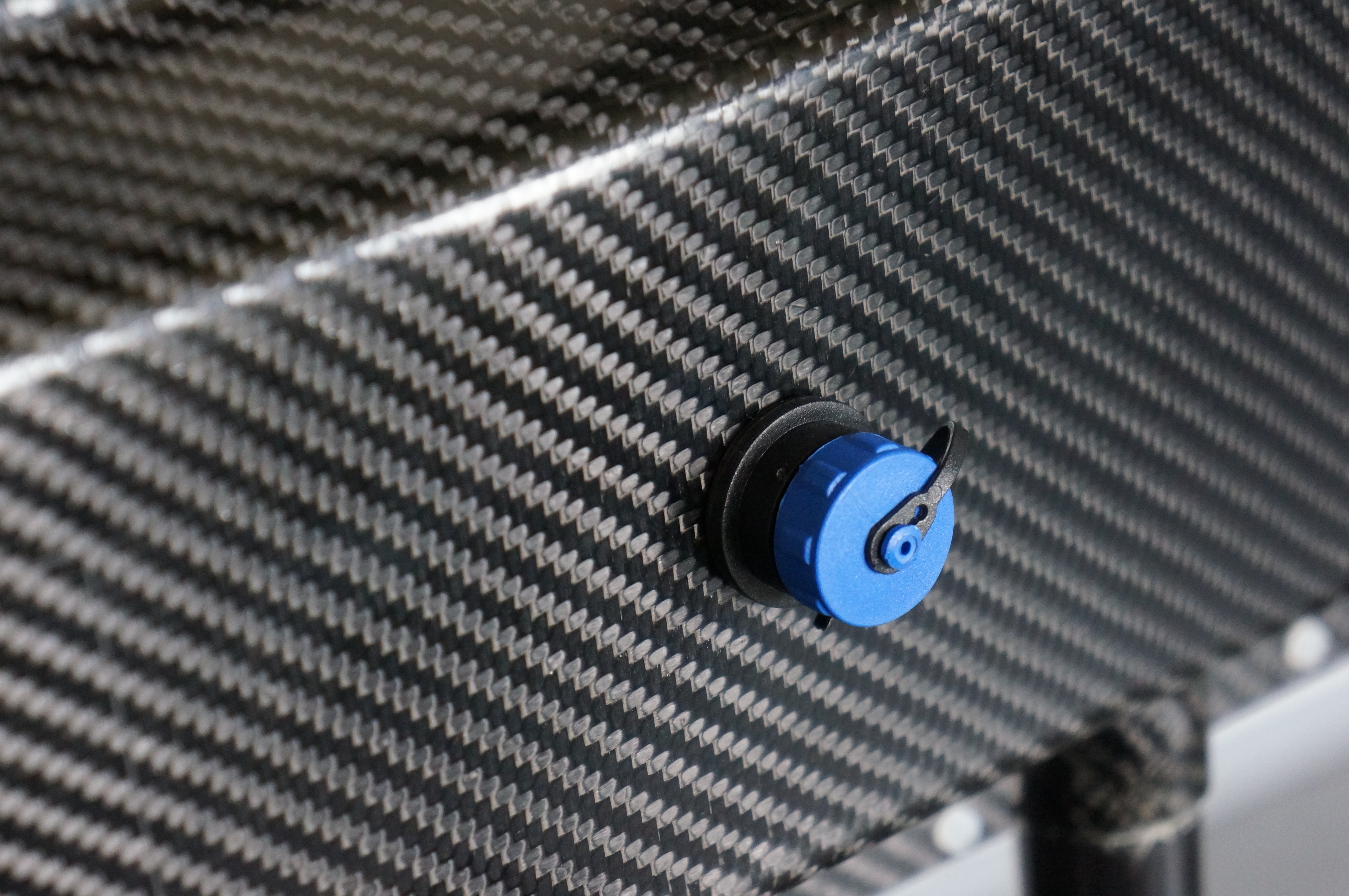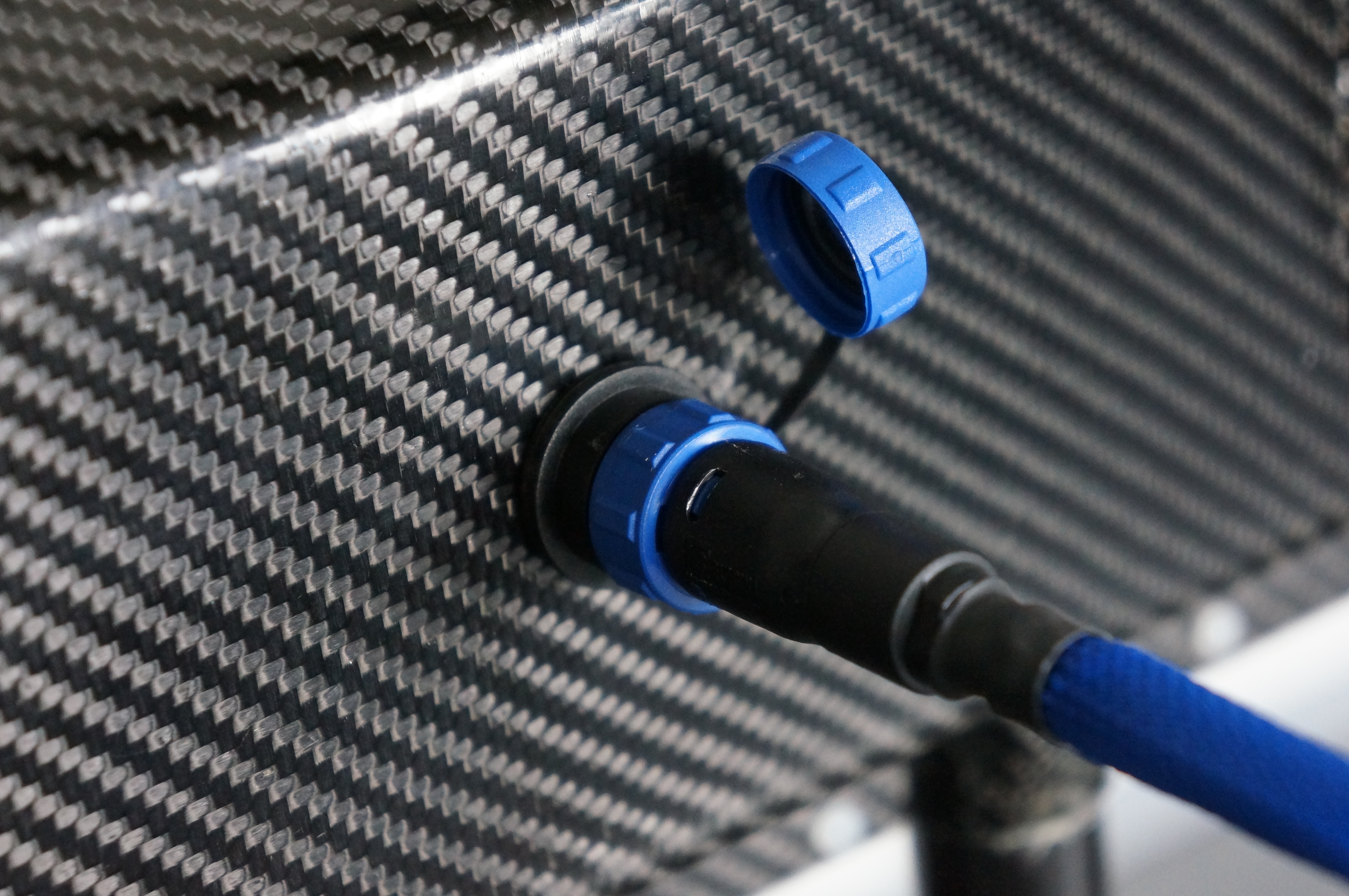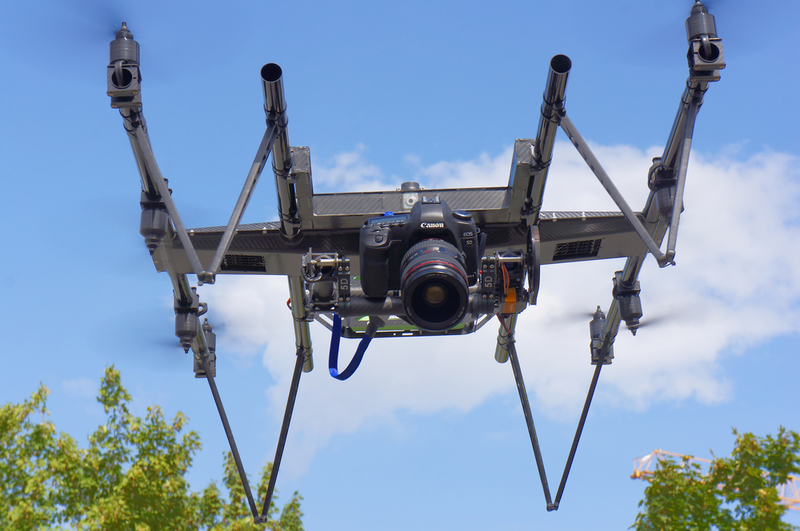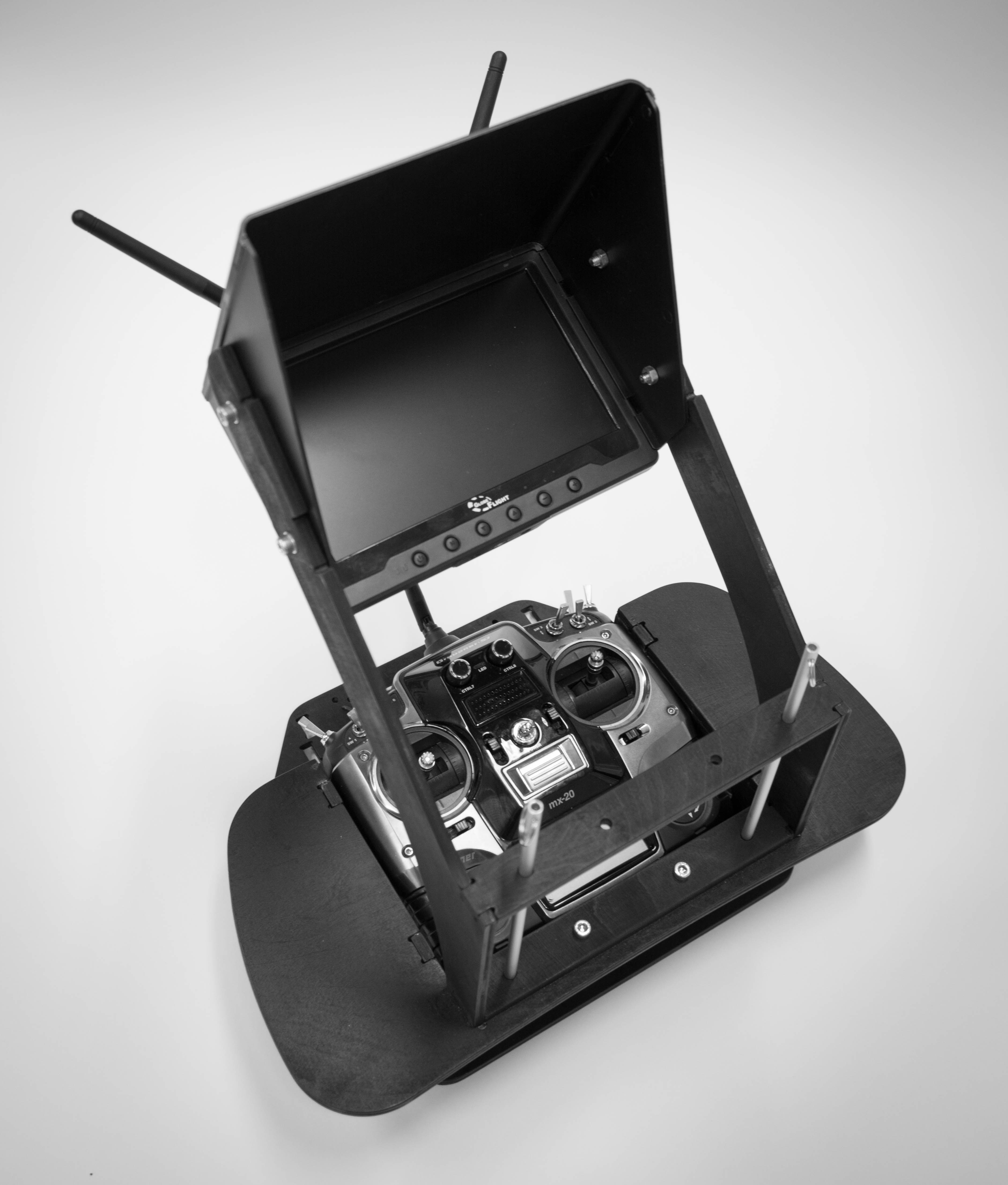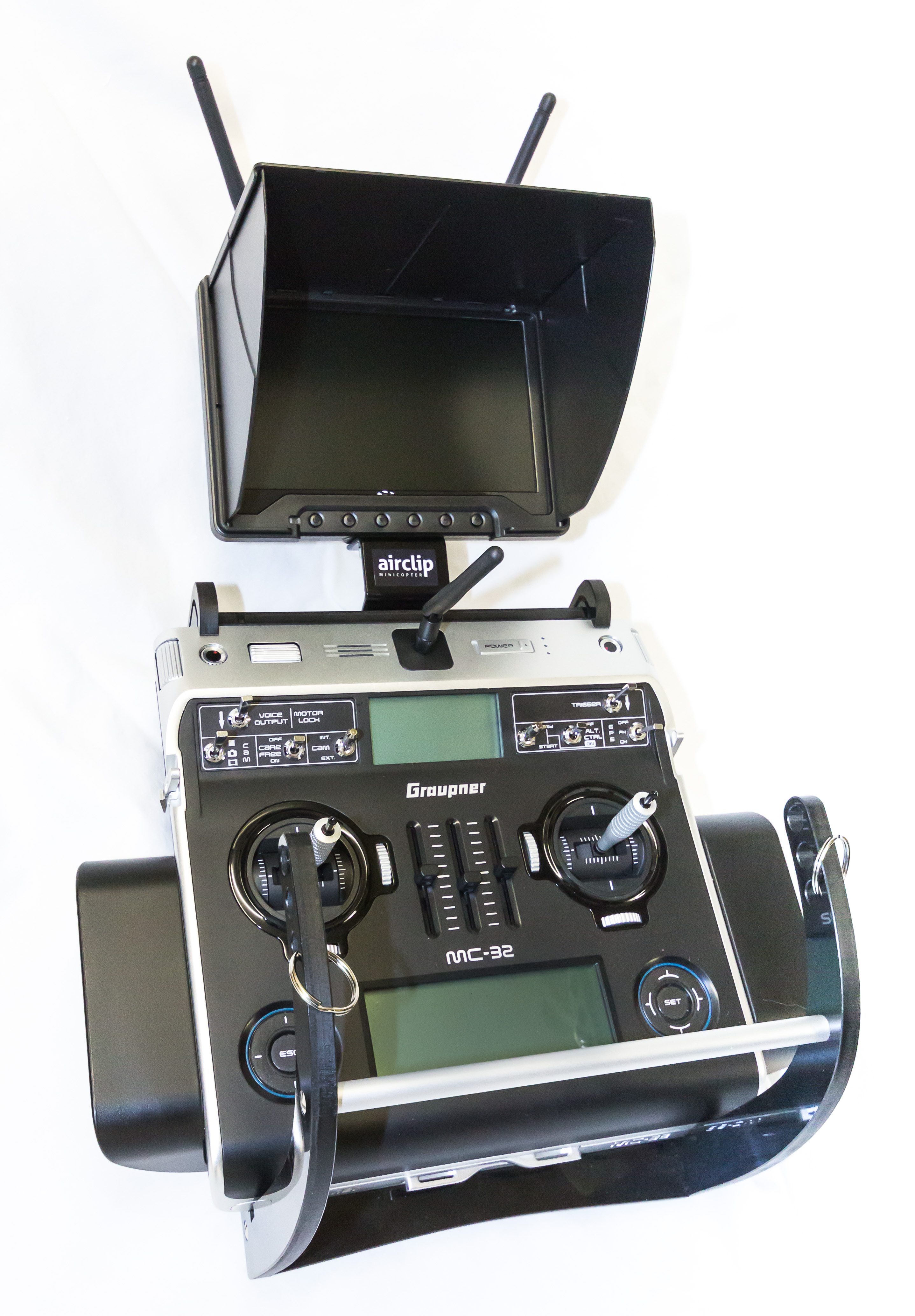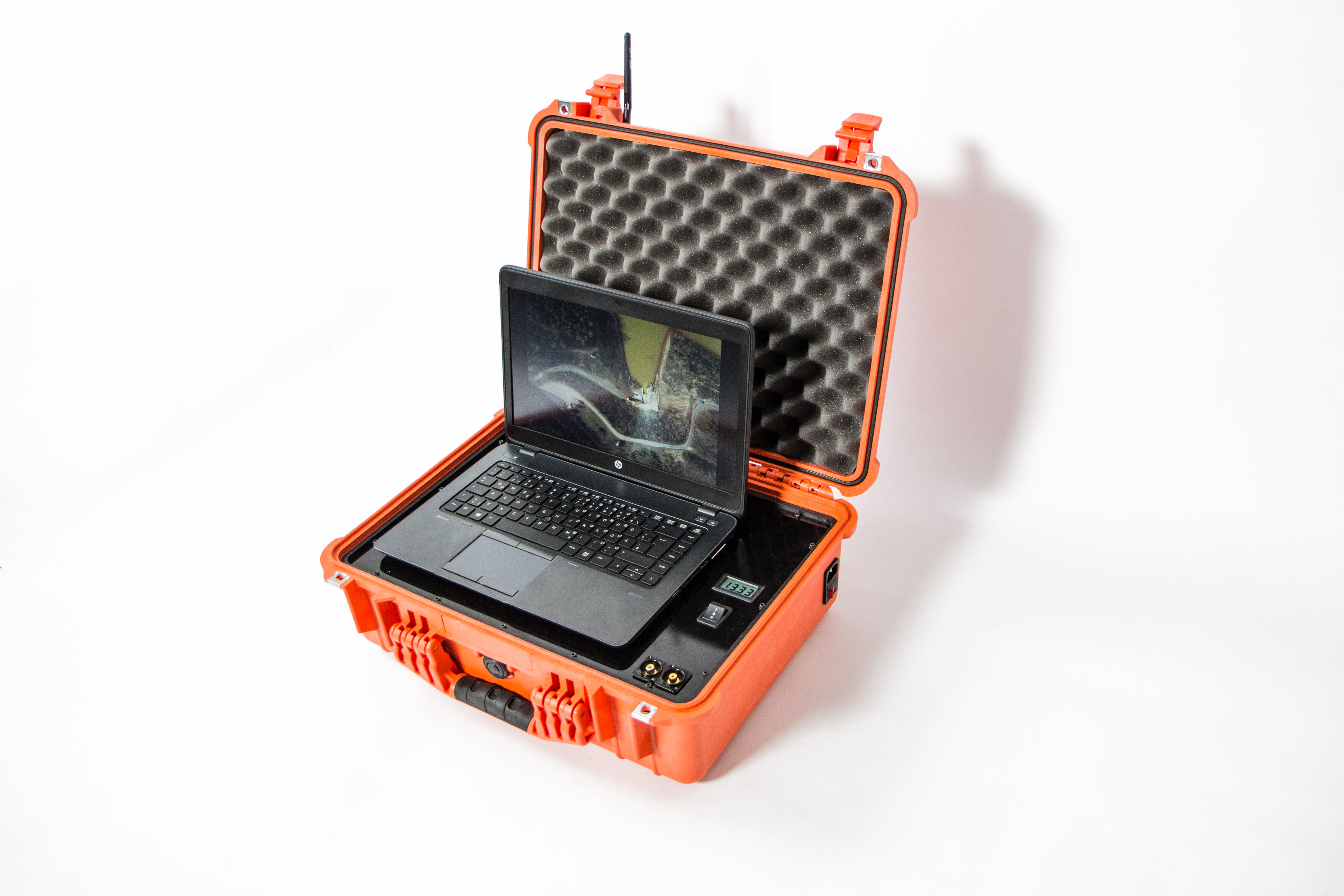The body of Horus® 2.0 has been comprehensively redeveloped. The goal was to facilitate the manufacture of the copter's different varieties. With the new body, it is now possible to accommodate the clients' wishes without any additional development work. In addition to these improvements, the team succeeded in optimizing the platform's vibration characteristics. The propulsion units and the payload now transfer their forces to different beams within the construction, which leads to an improved vibration decoupling and, in turn, to especially steady camera work.
During the redevelopment process, a special focus was put on improving the cooling concept. While the power electronics in HORUS® 1.0 were positioned directly in the airflow, HORUS® 2.0 now has separate cooling elements that transport the heat to the outside of the body. This concept allowed an airtight and waterproof design. To put it more clearly: it is now possible to fly the drone in rain.
Due to its slender structure, the copter only offers a very small target surface for wind. This means that it is operable even in bad and windy weather. Due to the body's symmetrically shaped upper and lower sides, crosswinds will not cause any buoyancy that may lead to altitude fluctuations. This is proven in a direct comparison between HORUS® 1.0 and HORUS® 2.0.
